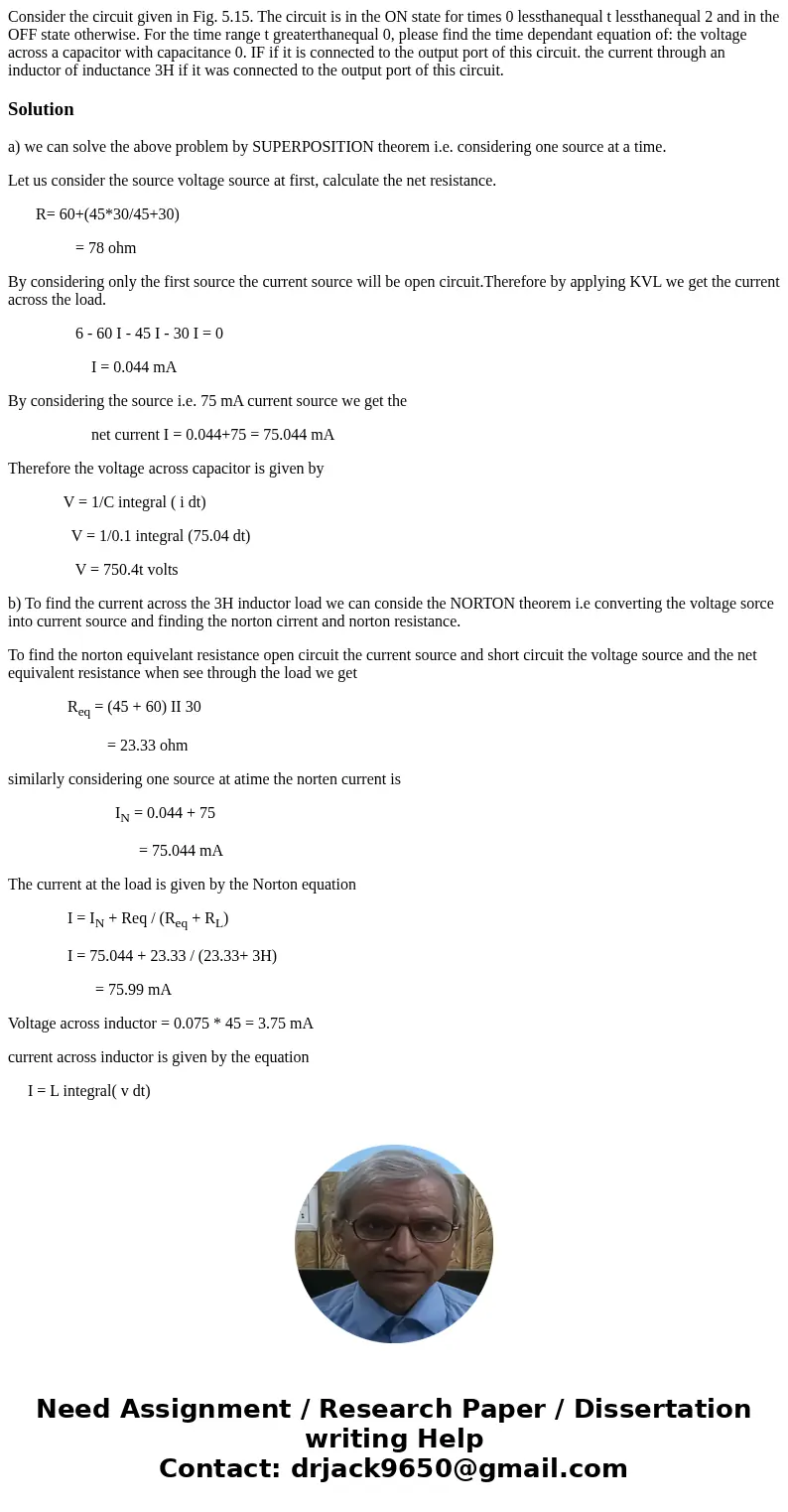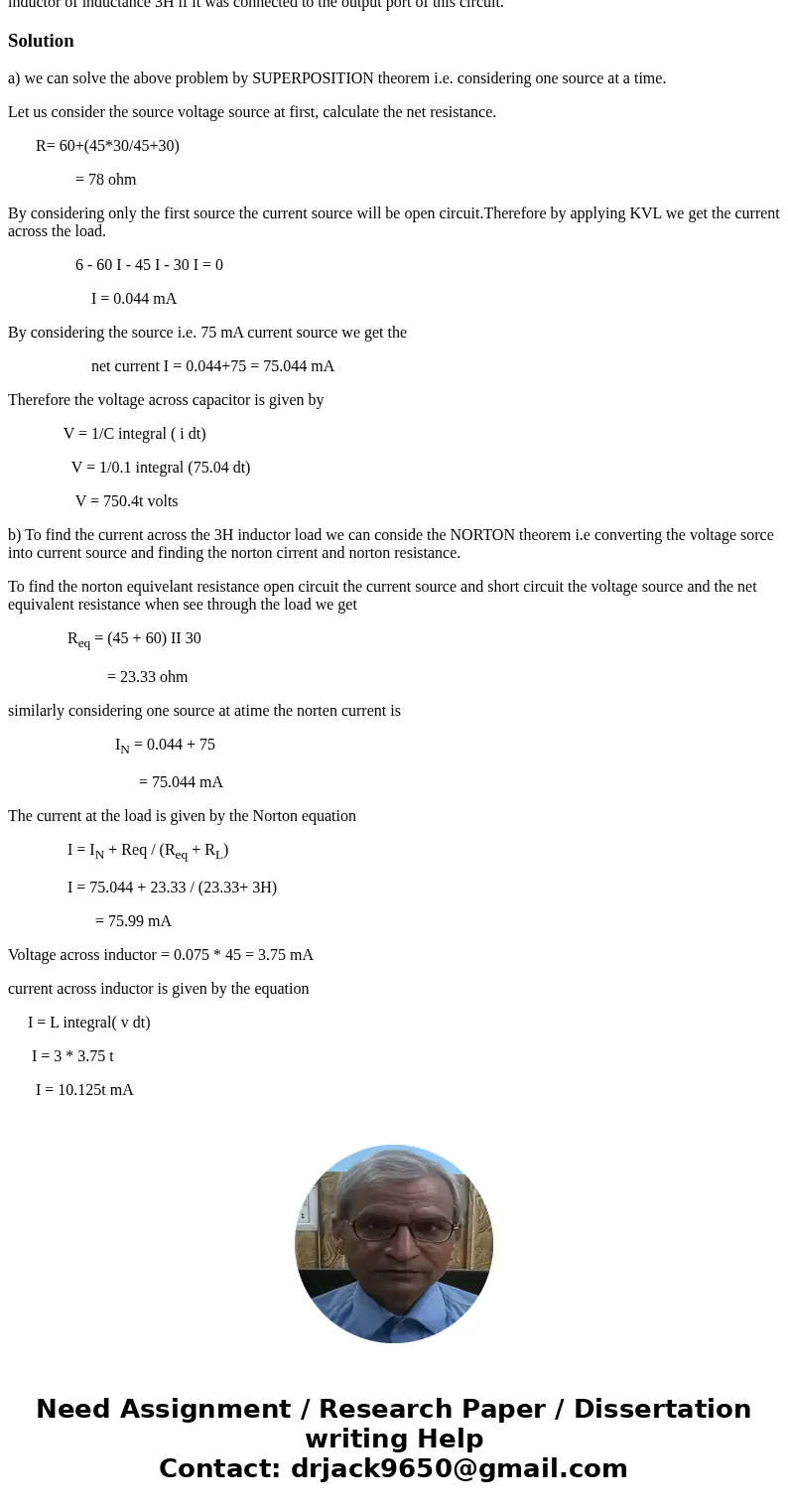Consider the circuit given in Fig 515 The circuit is in the
Solution
a) we can solve the above problem by SUPERPOSITION theorem i.e. considering one source at a time.
Let us consider the source voltage source at first, calculate the net resistance.
R= 60+(45*30/45+30)
= 78 ohm
By considering only the first source the current source will be open circuit.Therefore by applying KVL we get the current across the load.
6 - 60 I - 45 I - 30 I = 0
I = 0.044 mA
By considering the source i.e. 75 mA current source we get the
net current I = 0.044+75 = 75.044 mA
Therefore the voltage across capacitor is given by
V = 1/C integral ( i dt)
V = 1/0.1 integral (75.04 dt)
V = 750.4t volts
b) To find the current across the 3H inductor load we can conside the NORTON theorem i.e converting the voltage sorce into current source and finding the norton cirrent and norton resistance.
To find the norton equivelant resistance open circuit the current source and short circuit the voltage source and the net equivalent resistance when see through the load we get
Req = (45 + 60) II 30
= 23.33 ohm
similarly considering one source at atime the norten current is
IN = 0.044 + 75
= 75.044 mA
The current at the load is given by the Norton equation
I = IN + Req / (Req + RL)
I = 75.044 + 23.33 / (23.33+ 3H)
= 75.99 mA
Voltage across inductor = 0.075 * 45 = 3.75 mA
current across inductor is given by the equation
I = L integral( v dt)
I = 3 * 3.75 t
I = 10.125t mA


 Homework Sourse
Homework Sourse